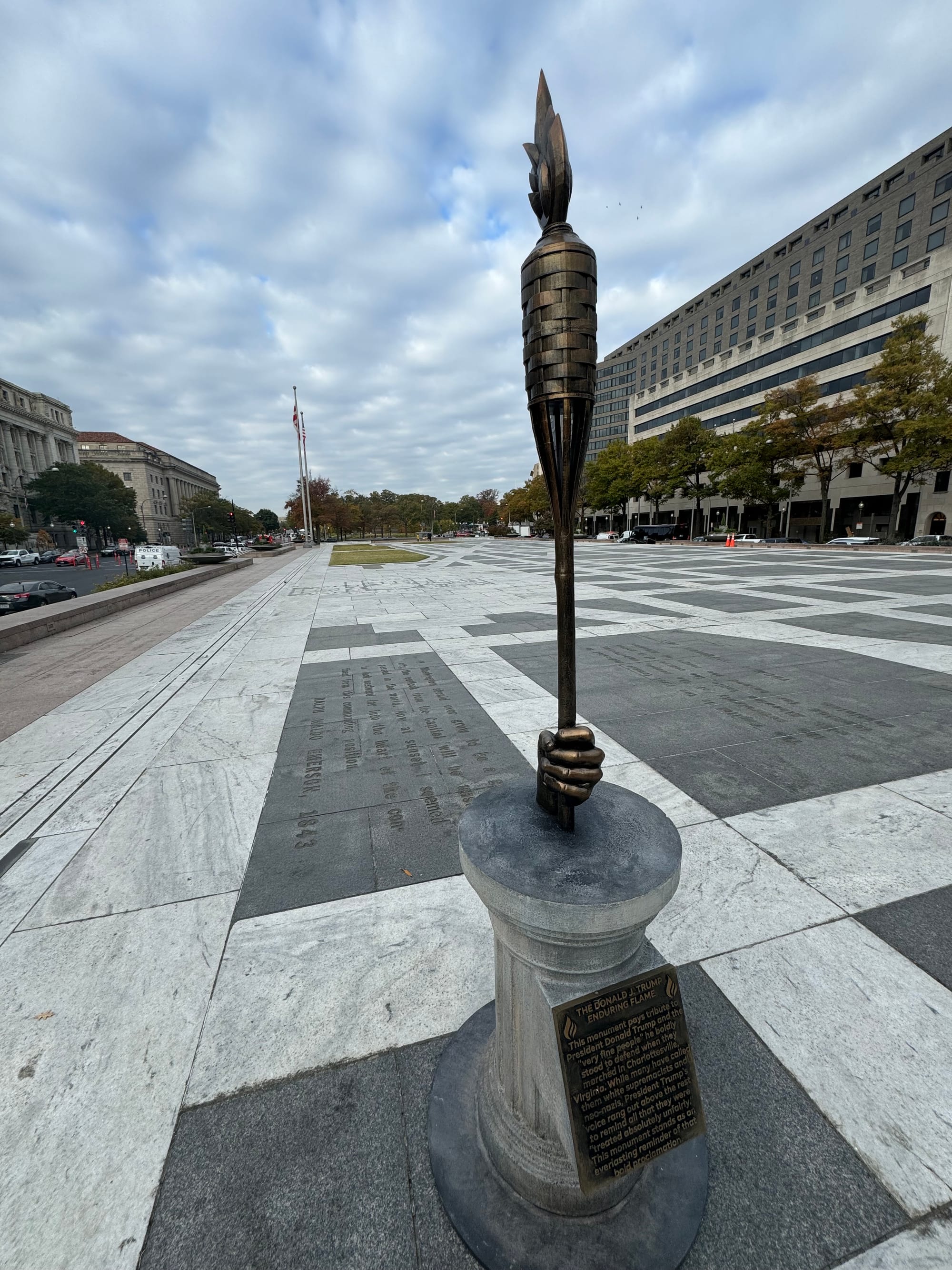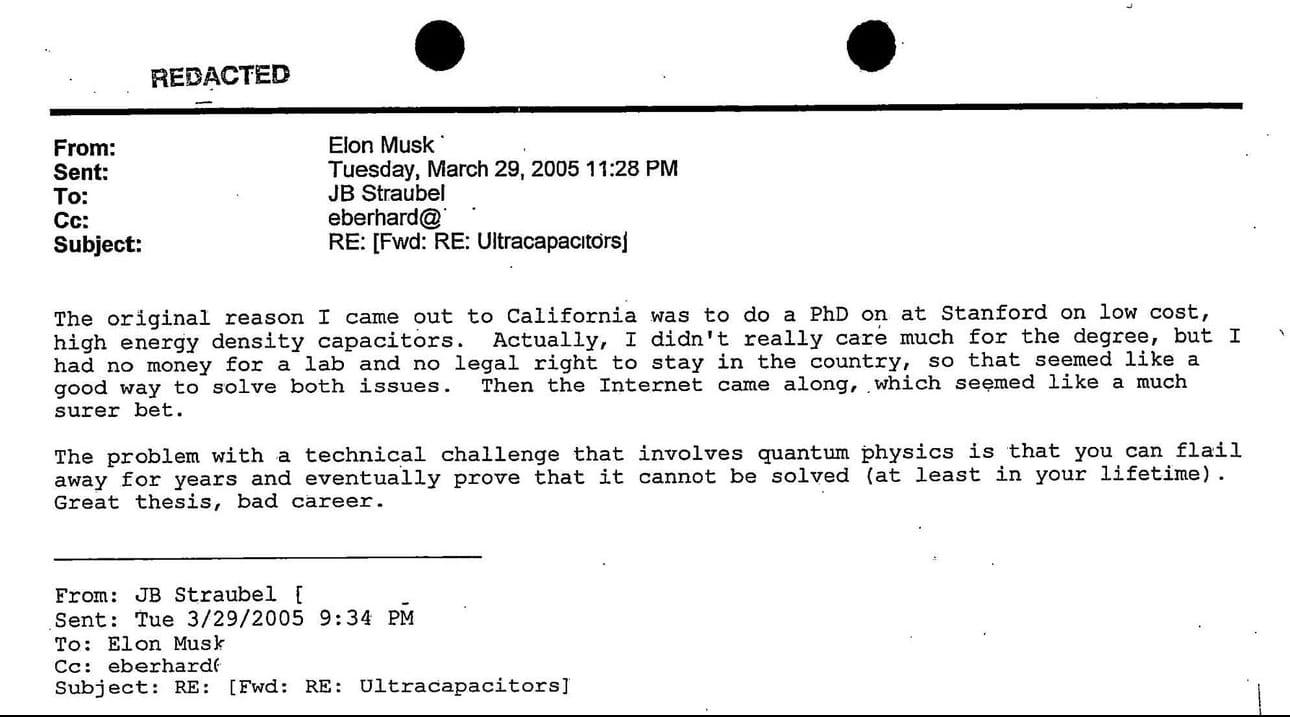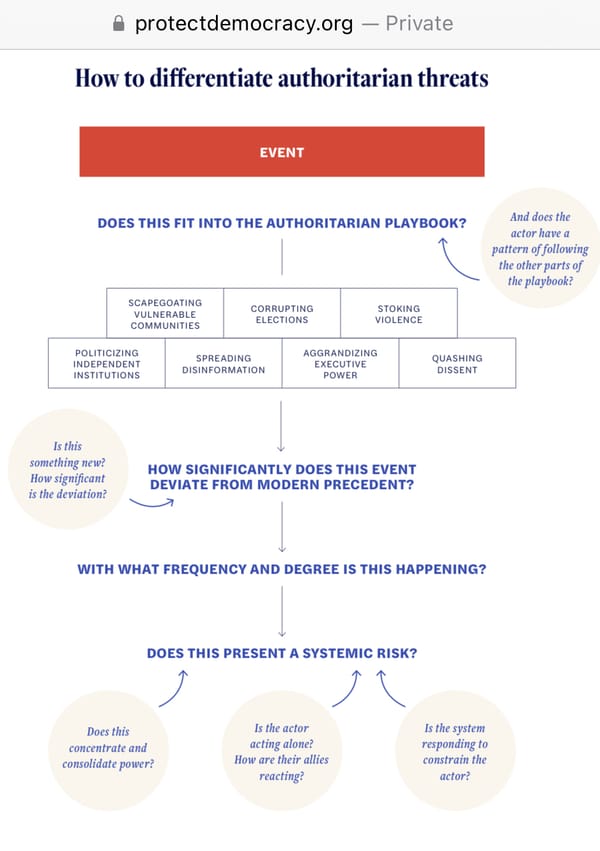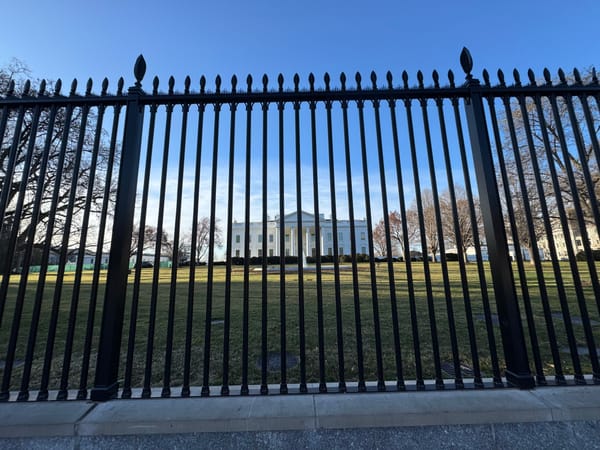Don’t bring a knife to meme fight. Make a truth sandwich to prebunk lies.


Good afternoon from Washington, where I’m back on the Hill after a bike ride to burn off stress, anxiety, and frustration.
Welcome to all of the news subscribers who have arrived after 404Media’s kind recommendation. As a gentle but urgent reminder, while I’ve seen steady growth since April, CivicTexts is not even close to sustainable yet.
Please upgrade to a paid membership and, if you can, directly support both this work and my family as I continue to figure out what’s next. Your support means I can continue to make CivicTexts free and open to all.

The Ellipse south of the White House is abuzz preparing for Vice President’s rally there tonight. I plan to attend with my daughter, and bear witness to history.

Earlier in the day, I bore witness to new public art on Freedom Plaza, where someone erected a satiric “enduring flame” commemorating former President Trump defending the Americans who protested the removal of a monument honoring a white nationalist who fought to preserve slavery ‘as “very fine people.”
I uploaded a video of the ”lmemorial” to YouTube, if you’d like a closer look and analysis.
Today, however, I want to focus on a challenge that seems to bedevil both major media organizations and the people formerly known as the audience: how to report on powerful people who intentionally deceive the public or misrepresent themselves or their actions.
Back in 2018, I wrote about the search for a vaccine for a disinformation virus.
The wicked problem the press faced was already acute, years before official lies ignited an insurrection and misinformed Americans about a deadly airborne disease in a pandemic:
For decades, reporters have been trained to record and amplify the public statements of a President.
Trump’s brazen lies have “hacked” that approach, resulted in amplified propaganda, misinformation and disinformation.
Sunlight may be a good disinfectant, and electricity a fine policeman, but some disinformation viruses are highly resistant to exposure.
How should journalists respond when corruption is brazenly open, lies are intended to disinform, and they themselves are the targeted by a hate movement?
Unprecedented public mendacity by the President of the United States requires a better response.
Unfortunately, we aren’t seeing it across news media or social media. While the Washington Post reported that “election officials around the world are adopting “prebunking” campaigns, as AI and other threats jeopardize voting,” journalists keep priortizing falsehoods in headlines and tweets.
There is an innovation is worth trying: a “truth sandwich,” a term coined by Brian Stelterc riffing on the framework by linguist George Lakoff, and outlined by Guardian columnist & Columbia Journalism School professor Margaret Sullivan:
- report the truth. State the facts first, as known.
- report what a politician or official falsely claimed in context, with documentary evidence.
- fact-check those claims in-line in the same broadcast, story, or post — not a blog. Tepeat the truth again.
Don’t put false claims or denials in headlines, or privilege a falsehood in a tweet.
Do not just post a fact-check of a broadcast online, after it airs, or show a QR code hoping people will scan and second-screen your program.
Do run a prebunk first, to establish facts. Prebunking inoculates a body politic against viral lies with facts, as the Washington Post reported this summer:
Election officials and researchers from Arizona to Taiwan are adopting a radical playbook to stop falsehoods about voting before they spread online, amid fears that traditional strategies to battle misinformation are insufficient in aperilous year for democracies around the world.
Modeled after vaccines, these campaigns — dubbed “prebunking” — expose people to weakened doses of misinformation paired with explanations and are aimed at helping the public develop “mental antibodies” to recognize and fend off hoaxes in a heated election year.
It’s based on existing research, updated for our quicksilver Information Age:
Prebunking draws inspiration from “inoculation theory,” which was developed by the social psychologist William J. McGuire in the 1960s. McGuire posited that you could prepare people to reject a misguided argument by first exposing them to a weakened form of that argument, along with a strong refutation of it — sort of like a vaccine for the mind. Then when people encounter that argument in the wild, the theory goes, they recognize it and are less likely to fall for it.
The tactic has attracted fresh interest in recent years as a way to fight online misinformation. Sander van der Linden, a social psychology professor at the University of Cambridge who worked with Google on prebunking techniques, is among the researchers who have found promising results in experiments, including with the online game “Bad News.” In the game, users play the role of a fake news tycoon, amassing followers by exploiting people’s emotions and gaining credibility by impersonating real news sources
This why I generally discourage news media amplifying a raw livestream of a speech or rally by anyond who intentionally delegitimizes the journalists and journalism who hold them to account.
That’s exposing people to viral lies before inoculating them with facts.
News media should not help them inoculating their partisans or stans against adversarial reporting that reveals fraud, waste, incompetence, corruption, or criminality.
Do report out the lies, but report out the facts, first. Stating the facts first is a key strategy in any (small d) democratic playbook to counter the authoritarian playbook, whether you’re a journalist, White House official, teacher, or digital creator.
Don’t play whack-a-mole afterwards, trying to chase a conspiracy theory thats already gone viral.
A lie is tweeted halfway around the world while the truth is still unlocking its smartphone.
On that count, the Washington Post could better defend its reporting on how the wealthiest man into the world — at least on paper — didn’t have legal status to work in the United States after he didn’t show up to class at Stanford.
If your journalism is going to effectively hold an oligarch accountable as a disengenuous hypocrite and then be cited by the President of the United States, then editors should be prepared for it to be attacked.
(I know the Post is busy with an expanding trust crisis of its owner’s own making, but hear me out.)
If the reporting is sound, then be ready for the denial and to defend the work against attacks.
Don’t allow you or your publication to be used to create doubt about the integrity of your journalism through weak headlines or poorly crafted social media posts.
To put it another way, don’t bring a knife to a meme fight. Put the denial, deflection, or disinformation in a truth sandwich.
To make this concrete, here’s how the Post promoted its story over email:

Here’s a rewrite:

3) Elon Musk knew in 2005 he had “no legal right to stay” in the USA to work.
•Wait, what? Musk denied a Washington Post report that found Musk lacked the legal status to build a startup in the 1990s.
President Biden cited the Post’s journalism when he criticized the South African-born tech oligarch who is now campaigning, donating money, and promoting former President Donald Trump on X.
The bigger picture: Other American oligarchs & business leaders are staying quiet on Trump’s authoritarian threat to democracy. (Gift Link)
At the Post: Jeff Bezos decided the paper he owns would no longer endorse presidential candidates. The surprise announcement angered former editors, Woodward, Bernstein, staff, subscribers, & every American who trusted the publication to seek truth & hold our government & politicians accountable, without fear or favor.
Make sense?
While most of us will never write headlines or social media posts or email newsletters for newspapers and news networks, many of us can and do post online ourselves.
If you do, please state the facts first, show your work, cite your sources, and check out the excellent News Literacy Project for more strategies.
That’s it for now. I’m heading back down to the Mall shortly. Stay safe, all!



